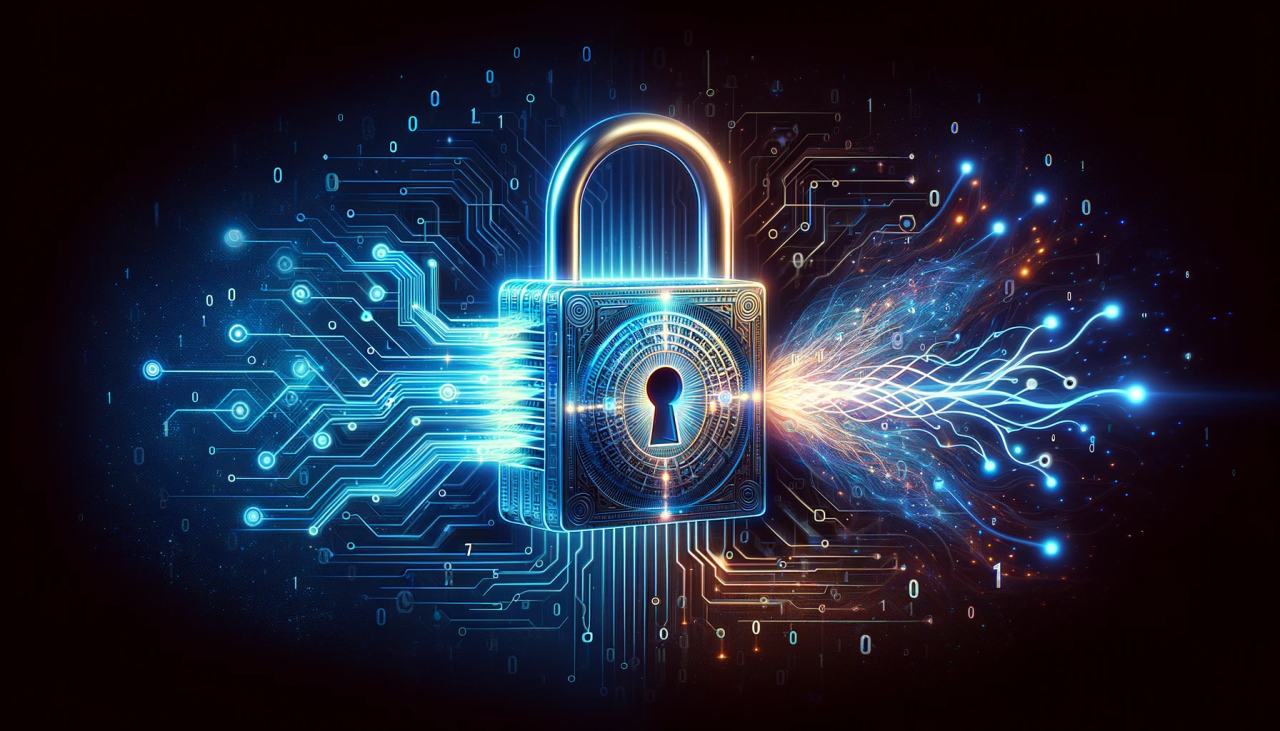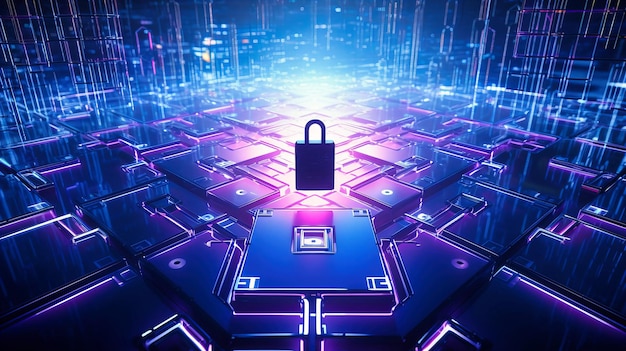With quantum computing advancing at a rapid pace, current cryptographic systems are at risk of becoming obsolete. Although classical cryptography has served as the cornerstone of secure digital communication for decades, it was never built to withstand the immense computational power quantum systems will soon offer. This reality has created an urgent demand for post-quantum cryptography (PQC) — encryption methods designed to resist attacks from quantum computers.
Post-quantum cryptography is not merely a theoretical discussion reserved for scientists; it’s a practical necessity for any organization that relies on encrypted data — from financial institutions and healthcare systems to defense contractors and government agencies. The transition to PQC isn’t optional; it’s inevitable.
This article will explore the nature of post-quantum cryptography, why it’s needed, the threats posed by quantum decryption, the leading algorithms under development, and what organizations must do today to prepare for a quantum-secure future.
What Is Post-Quantum Cryptography?
Post-quantum cryptography refers to a class of cryptographic algorithms that are designed to be secure against both classical and quantum computers. Unlike traditional cryptographic schemes that rely on mathematical problems such as integer factorization or discrete logarithms — both of which can be broken by quantum algorithms — PQC methods are based on mathematical problems that are believed to be difficult even for quantum machines.
The goal of PQC is to provide the same level of functionality as existing cryptographic systems, such as:
-
Digital signatures
-
Key exchanges
-
Encryption schemes
But it must do so in a way that quantum computers cannot easily break. This makes PQC critical for long-term data security, particularly for information that needs to remain confidential for years or even decades.
Why Traditional Cryptography Is No Longer Safe
Most secure digital communications today rely on public-key cryptography, including:
A. RSA Encryption
Based on the difficulty of factoring large integers.
B. Elliptic Curve Cryptography (ECC)
Relies on the hardness of solving elliptic curve discrete logarithm problems.
C. Diffie-Hellman Key Exchange
Based on the discrete logarithm problem.
These methods are generally secure against classical computers but are vulnerable to Shor’s Algorithm, a quantum algorithm that can factor large integers and compute discrete logarithms in polynomial time. When powerful enough quantum machines become available, these classical cryptographic systems will be rendered obsolete.
Implication:
If encrypted communications are intercepted today and stored, they could be decrypted in the future once quantum capabilities reach maturity — a strategy known as “Harvest Now, Decrypt Later.”
The Quantum Threat Timeline
Although large-scale, fault-tolerant quantum computers are still under development, experts estimate that within 10 to 20 years, quantum computers may reach the capability to break widely used encryption schemes.
This timeline has prompted organizations such as the National Institute of Standards and Technology (NIST) and National Security Agency (NSA) to begin preparing for a post-quantum world.
Key milestones include:
A. NIST PQC Standardization
Since 2016, NIST has been working on a project to standardize post-quantum cryptographic algorithms. The final standard is expected to be released by 2024-2025.
B. NSA’s Commercial National Security Algorithm (CNSA) 2.0
NSA has outlined a roadmap for transitioning national security systems to quantum-resistant algorithms by 2030.
Post-Quantum Cryptographic Techniques

Unlike traditional cryptographic methods, PQC relies on mathematical problems that are assumed to be resistant to both classical and quantum attacks. The most promising families of post-quantum algorithms include:
A. Lattice-Based Cryptography
Relies on the hardness of solving problems in high-dimensional lattices.
Examples:
-
Kyber (key encapsulation)
-
Dilithium (digital signatures)
B. Code-Based Cryptography
Based on the difficulty of decoding random linear codes.
Example:
-
Classic McEliece
C. Multivariate Quadratic Equations
Involves solving systems of multivariate polynomial equations over finite fields.
Example:
-
Rainbow (digital signatures)
D. Hash-Based Signatures
Uses cryptographic hash functions to build secure digital signatures.
Example:
-
SPHINCS+
E. Isogeny-Based Cryptography
Relies on the hardness of finding isogenies between elliptic curves.
Example:
-
SIKE (recently deemed insecure but important historically)
Each category brings its own strengths, weaknesses, and trade-offs in terms of speed, security, and efficiency.
The Role of NIST in Standardization
The NIST Post-Quantum Cryptography Standardization Project is a global effort to evaluate and standardize cryptographic algorithms that can resist quantum attacks.
As of 2024, NIST has announced a final selection of algorithms for standardization:
A. Kyber – for public-key encryption and key encapsulation
B. Dilithium – for digital signatures
C. SPHINCS+ – for hash-based signatures
D. Falcon – also selected for digital signatures
These algorithms are expected to become the backbone of post-quantum secure systems, replacing RSA, ECC, and other vulnerable schemes.
Preparing for the Quantum Transition
The shift to post-quantum cryptography isn’t something that can happen overnight. It requires careful planning, thorough risk assessments, and significant changes in infrastructure. Here’s how organizations should approach the transition:
A. Conduct a Cryptographic Inventory
Identify all current systems and software that rely on cryptographic methods, especially public-key infrastructure (PKI).
B. Prioritize Long-Lived Data
Focus on securing data that needs to remain confidential for 10+ years — this includes personal health records, legal contracts, and classified information.
C. Adopt Hybrid Encryption Models
Use dual encryption strategies that combine classical and quantum-resistant algorithms to ensure continuity and security during the transition.
D. Follow NIST and NSA Guidance
Stay updated with standards from NIST and follow compliance frameworks to align with national security guidelines.
E. Test and Validate PQC Algorithms
Experiment with available implementations of PQC algorithms and validate their performance under your infrastructure.
Implications for Business and Industry
Industries most affected by quantum vulnerabilities include:
A. Banking and Financial Services
Need secure transactions, customer data protection, and encrypted communications.
B. Healthcare
Stores vast quantities of sensitive patient information that require long-term confidentiality.
C. Telecommunications
Maintains large-scale communication networks that must remain private and secure.
D. Government and Defense
Handles classified information and military communications with extended confidentiality requirements.
E. Cloud and IoT Providers
Vast data exchanges across networks make encryption paramount for both customer trust and legal compliance.
Businesses must start evaluating their supply chains and software dependencies to ensure post-quantum readiness.
Post-Quantum Cryptography in Practice
Some major technology companies are already integrating post-quantum algorithms into their products and services:
A. Google
Experimented with hybrid post-quantum key exchanges in Chrome to test real-world performance.
B. Microsoft
Developed PQCrypto-VPN and is working on post-quantum TLS integrations for Azure.
C. IBM
Invested in both quantum computing research and quantum-safe cryptographic services.
D. AWS
Launched quantum-safe key exchange options for selected cloud services.
These industry leaders are paving the way for broader adoption of post-quantum techniques in the coming years.
Myths and Misconceptions About PQC

As with any disruptive technology, post-quantum cryptography is surrounded by misconceptions. Let’s debunk a few:
A. “Quantum Computers Will Never Be Powerful Enough.”
Fact: While general-purpose quantum computers are not yet available, steady progress indicates they’re coming sooner than expected.
B. “Current Encryption Is Still Safe.”
Fact: For now, yes. But encrypted data stored today may be compromised tomorrow by quantum decryption.
C. “We Can Wait Until Quantum Computers Arrive.”
Fact: By then, it may be too late. Transitioning cryptographic infrastructure takes years.
D. “Only Governments Need to Worry.”
Fact: Every business that values privacy and data integrity must prepare, regardless of size.
Building Quantum Resilience Today
Preparing for a post-quantum future means more than just updating software. It’s about establishing crypto agility — the ability to quickly swap cryptographic algorithms as standards evolve.
Steps to build resilience:
A. Train IT Staff and Developers
Provide training on quantum-safe practices and algorithms.
B. Integrate PQC into New Systems
Design new applications with modular encryption support for easier upgrades.
C. Use Open Standards and Open Source Tools
Collaborate with the global community to ensure compliance and interoperability.
D. Communicate With Stakeholders
Educate executives and clients about the quantum threat and mitigation plans.
Conclusion: Future-Proofing Security Starts Now
Quantum computing holds enormous promise for science, medicine, and technology — but it also brings real threats to today’s security protocols. Waiting until quantum computers are mainstream is not an option. The path toward secure digital communication in the quantum era starts today, with the proactive adoption of post-quantum cryptography.
By aligning with NIST’s standards, conducting cryptographic inventories, and adopting quantum-resilient strategies now, organizations can protect sensitive information for decades to come.
The quantum future is inevitable — but with the right preparation, your data doesn’t have to be vulnerable.







